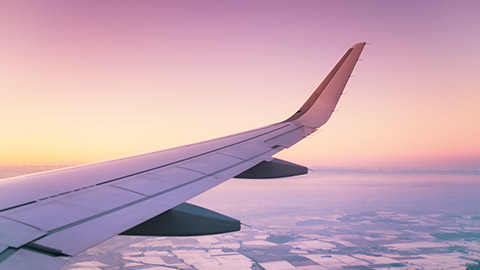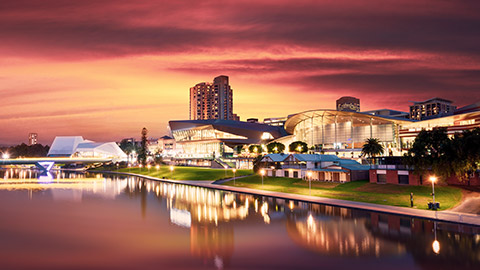Within this topic, we are going to explore the origin – destination (O/D) model and the effects it has. Read below to find out more.

This origin – destination (O/D) model relates to the business of tourism in terms of estimating the true origin and destination of tourists, this is done on a route by route basis.
Note: A route refers to a journey taken by a person, whether it’s taken by walking, driving, flying or cruising/sailing. A route always includes a starting point (origin) and a finishing point (destination), it also may include transit points.
The purpose of this model is to collect and analyse specific travel data, which in turn is extremely valuable to the tourism industry. The people are analysed in terms of their travel movements, and the information gathered is used by the products and places to build a stronger travel and tourism industry.
Remember tourism is made up of three components; the three p’s. If one of these components didn’t exist, then neither would tourism. Hence the importance of collecting and analysing this data, let’s look at why this data is so precious and how it is used.
- Provides a detailed, robust and timely source of information.
- Monitors the performance of specific routes.
- Key opportunities are identified for new air services.
- Seeks opportunities where the current demand surpasses the current supply.
- Supports the development of strategies to either improve or rectify situations.
- Assists the development of strategic marketing campaigns.
- Provides an insight into the relationship between border entries and destinations.
- Identifies and targets the most important markets for a country, and in turn this is where the marketing dollars are spent, e.g. promotions and campaigns enticing the people of these countries (markets) to visit or return to New Zealand.
The data which is collected is broken down into several components before the data is analysed and the outcomes determined.
Firstly, places are broken down into origin, transit & destination. The process of how this first step is done, is not easy. This is because a person may depart from Sydney and travel to Los Angeles, via Auckland – however, this person’s origin may not have been Sydney at all. The person may have travelled to Sydney with another international carrier, and therefore possibly on a separate ticket to the Sydney to Los Angeles ticket.
Remember the O/D model estimates the true origin and destination of passengers on a route by route basis.
E.g.
WHITE/JAMES MR
TICKET NO. 890 1583 1579
| Flight No. | Date | Origin/Dest | Dep | Arr |
|---|---|---|---|---|
| SA351 | 12AUG | Johannesburg to Sydney | 1000 | 1300 |
WHITE/JAMES MR
TICKET NO. 061 1583 1853
| Flight No. | Date | Origin/Dest | Dep | Arr |
|---|---|---|---|---|
| QF335 | 20AUG | Sydney to Auckland | 1200 | 1400 |
| QF119 | 20AUG | Auckland to Los Angeles | 1700 | 2200-1 |
The above example shows that Mr. James White has two tickets. Based on the first ticket, it’s assumed that his origin in Johannesburg and his destination is Sydney. However you can see that on his second ticket, he’s actually travelling on to Los Angeles, via Auckland. Los Angeles being his destination, and Sydney being the origin.
You can see how messy it can get and how difficult it can be to collect this data.
Remember the first step - places? PLACES are broken down into ORIGIN, TRANSIT and DESTINATION – which we’ve just looked at.
The next step is within each of these places, the PEOPLE, PRODUCTS and IMPACTS are analysed.
The diagram below shows how the information collect in the O/D model is broken downturn.

As you can see from this diagram, the O/D model looks at the PLACES which are the ORIGIN, TRANSIT and DESTINATION…then the data which is collected from each of these PLACES is analysed in terms of the PEOPLE, the PRODUCTS and the IMPACTS of tourism.
Let’s look at the questions which are asked of the O/D model.
- What types of people are involved in tourism at the origin?
- What are the tourism products available to people at the origin?
- What are the impacts of tourism on the origin?
- What types of people are involved in tourism at the transit point?
- What are the tourism products available to people in transit?
- What are the impacts of tourism on the transit point?
- What types of people are involved in tourism at the destination?
- What are the tourism products available to people at the destination?
- What are the impacts of tourism on the destination?
Read the following scenario regarding two travellers travelling from New Zealand to Australia then complete the table below.

Jamie and Kate Bosman live in Rotorua and they are travelling to Auckland in an airport shuttle. They arrive at the international airport and check in for their flight to Adelaide, then while waiting for their boarding call they buy a bite to eat at one of the airports cafes.
Their flight to Adelaide transits Sydney for an hour to pick up / drop off passengers, so they decide to do their Duty Free shopping there while waiting.
Once arriving into Adelaide, they taxi into the city and check into their hotel, Mercure Grosvenor Hotel Adelaide. While in Adelaide they’ll do a Barossa Valley Winery Tour, check out Rundle Mall and visit the Adelaide Zoo.
Use the above as a guide to complete the following activity.
Tom and Mary Jones live in Dunedin. They are about on embark on an overseas trip to Australia. Their friend is dropping them at Dunedin airport where they are catching an Air New Zealand flight to Christchurch. From Christchurch (CHC), after a four hour wait, they are flying Jetstar to Melbourne (MEL).
They will stay in Melbourne with Tom’s brother for 4 days. They are then flying from Melbourne to the Gold Coast (OOL), where they will spend five days in a serviced apartment. They intend to visit Dreamworld and Seaworld, as well as visit the Carrara Markets. Transportation will be by hire car. The rest of the time they will be relaxing, dining and shopping in the Surfer’s Paradise area.
They are then flying back to Christchurch on Air New Zealand, and then to Dunedin after a 4 hour wait, also on Air New Zealand. Their friend will then pick them up and take them back to their home.
